The wind energy boom of 2006 in United States
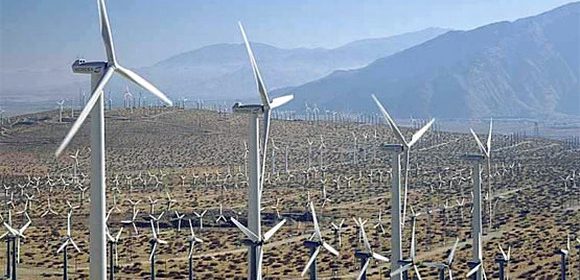
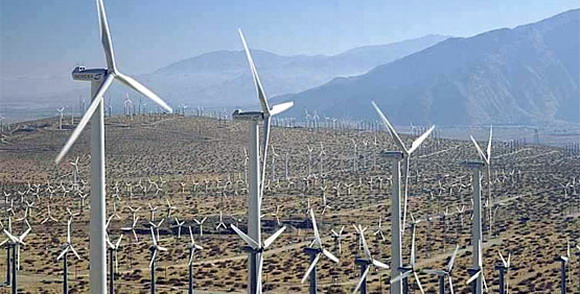
With costs dropping below those of conventional sources, United States had in 2006 his opportunity to invest in renewables. The decline in the price of electricity generated from wind turbines greatly increased the demand for green energy. Wind energy forecasting will come true.
When Austin Energy, the utility company of Austin, Texas, launched its GreenChoice program in 2000, the demand for green energy had to pay an extra rate. During the fall of 2005, soaring gasoline prices raised the costs of conventional electricity over the electricity generated by the wind, the source of most of green electricity. This crossing of lines of costs in Austin and other communities is a milestone in the United States to mark the shift to a renewable energy-based economy. Wind energy forecasting increased exponentially.
Finally Austin Energy ended up buying wind electricity less than ten year fixed price contracts, and offering these stable price GreenChoice subscribers. This energy product with fixed prices was tremendously attractive to 388 corporate clients of GreenChoice of Austin, including companies such as Advanced Micro Devices, Dell, IBM, Samsung, and 3 M. In Advanced Micro Devices, they came to save $4 billion over the next decade by hiring this energy option. School districts also signed contracts. Round Rock School District for example, projected savings of $2 million over the next ten years to local taxpayers.
A similar situation happened in Colorado to Xcel Energy, the largest supplier of electricity in the State. 33,000 customers of Xcel’s electricity generated by wind energy, which until 2005 paid each month US$ 6 more for its electricity, ended up paying slightly less than those used by conventional electricity, which came mostly from natural gas and coal. To meet the fast growing demand, Xcel planned offers builders of wind farms of up to 775 megawatts of new generation, enough to provide electricity to up to 232.000 households of Colorado.
The decrease of costs and PIIMBY syndrome
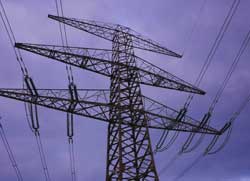
Austin Energy and Xcel Energy were among the first utilities that transmitted the decrease in the costs of wind energy to its customers. Although the short term, the price advantage of wind power on the conventional could disappear since the growing demand for «climate-conscious» customers could exhaust the offer, increasing prices, while natural gas prices were down from their recent highs of 2005. But however, in the longer term and as the natural gas reserves were exhausted, its price would be displayed to raise, what greatly offsetting the energy of the wind.
Interest in wind energy was growing while production costs fell. Although media attention focused on communities with a response of «not-in-my-backyard» (NIMBY) to wind turbines, as large installation offshore wind planned on Cape Cod, in a major part of the rest of the country farms wind were received enthusiastically. Here, the syndrome is called PIIMBY, put it in my backyard.
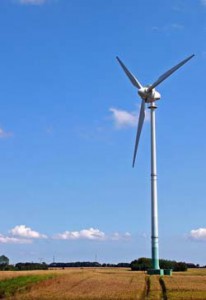
When Xcel publicly announced that it would develop several hundred additional megawatts of wind generation, it caught the attention of the ranching communities of the windiest area of eastern Colorado. In tiny rural towns as Grover, near the Wyoming border, ranchers welcomed the proposal of an installation of wind of 300 MW, which would cross about 30 ranches. With an advanced design of large wind turbines that could easily generate the value of US$ 100,000 of electricity per year, even a 3% fee would give ranchers $3,000 a year by renting a quarter-acre of their land (about 1,000 m2). And they could continue using the land for livestock.
To the North of the State of New York, the farmers of the County of Lewis, near Lake Ontario happily accepted the Wind Farm Maple Ridge of 195 turbines and between US $ 5,000 to US $ 10,000 a year in royalties that were offered by each turbine installed on their land. Rural communities hosted installations of wind because they provided extra income to farmers and ranchers, stalls qualified jobs, cheap electricity, and additional tax revenue to improve school facilities and roads.
The entry of big companies in the wind power market
The growing profitability of wind power ended also attracting the «big players». In 2002, General Electric bought Enron Wind, one of the few profitable segments of Enron, by placing the advanced design of the wind turbine in a preferred position in the world market for wind turbines.
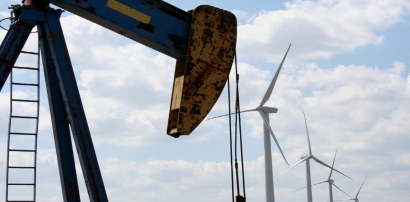
In mid-2005, Goldman Sachs bought Zilkha Renewable Energy, a small company of developing wind farms. Now known as the Horizon Wind Energy, wholly owned by Goldman Sachs, which was under construction or in the planning stages 4,000 megawatts of wind power enough to provide electricity to 1.2 million homes.
AES, major international player in the electricity production, used its purchase of SeaWest, another wind farm development company, to position itself strongly in the United States wind sector. In 2006 it had in development 1,800 megawatts of wind generation capacity.
Shell, one of the leading bidders for wind farms offshore in the United Kingdom, had 315 megawatts of capacity from wind generation in the United States and was already planning more. And BP was mapping areas in the United States where to build about 2,000 megawatts of wind generation capacity.
The keys to the expansion of the wind turbines
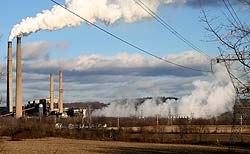
In all, the capacity of wind power generation in the United States grew by 36% in 2005, reaching 9.149 megawatts. In late 2005, there were commercial wind farms in 30 States. In 2006 capacity became stretched by 50%.
After years of uncertainty for the industry, when Congress allowed the tax credit for the production of the wind (PTC – production tax credit) expires multiple times, the extension of the PTC from 2005 until 2007 has renewed the confidence of investors in the future of the wind energy. The extension of the PTC, which was designed to compensate for subsidies for fossil fuels and nuclear power, was driving the growth in the planned number of new wind farms.
The situation of wind energy in the United States from 2006
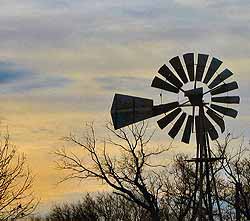
Wind power was emerging as the centerpiece of the new energy economy, because it is abundant, cheap, inexhaustible, distributed widely, clean, and «climate-benign». Three of the 50 States – North Dakota, Kansas, and Texas – had enough usable wind energy to meet all the national electricity needs. The cost of wind electricity generation had fallen from 38 ¢ per kilowatt-hour at beginning of the 1980s to the 4 ¢ – 6 ¢ of the moment, offering an almost endless cheap energy source.
Beyond this, these wells never dry up. No one can cut supply or increasing the cost of fuel. And the wind can supply our energy needs without affecting the Earth’s climate.
.
